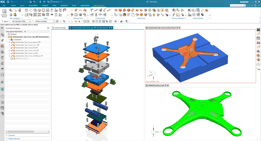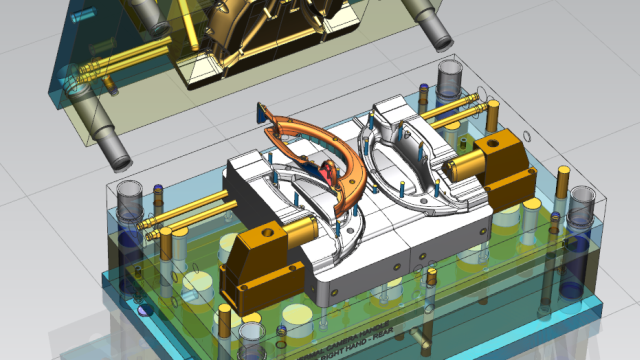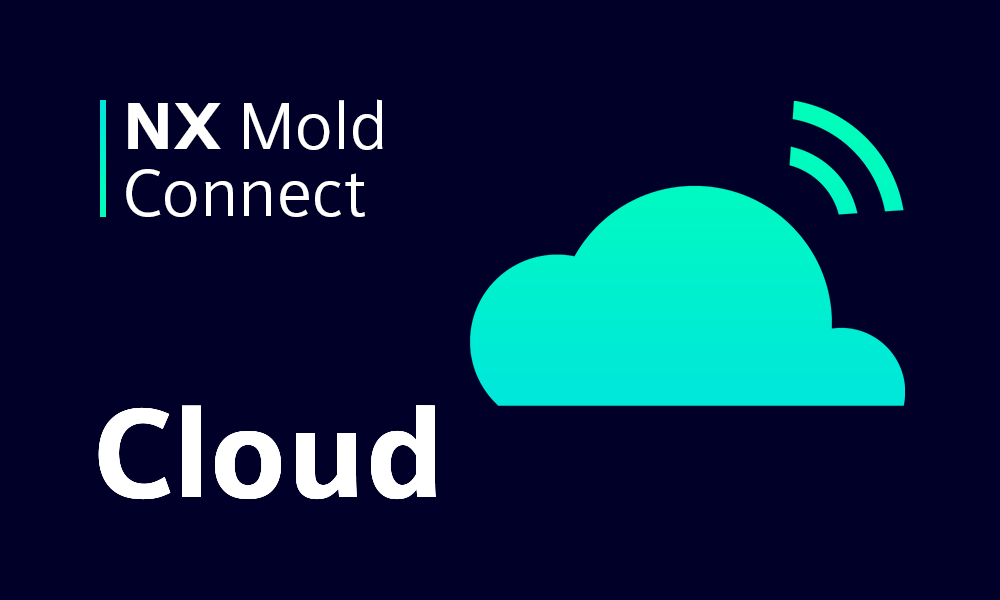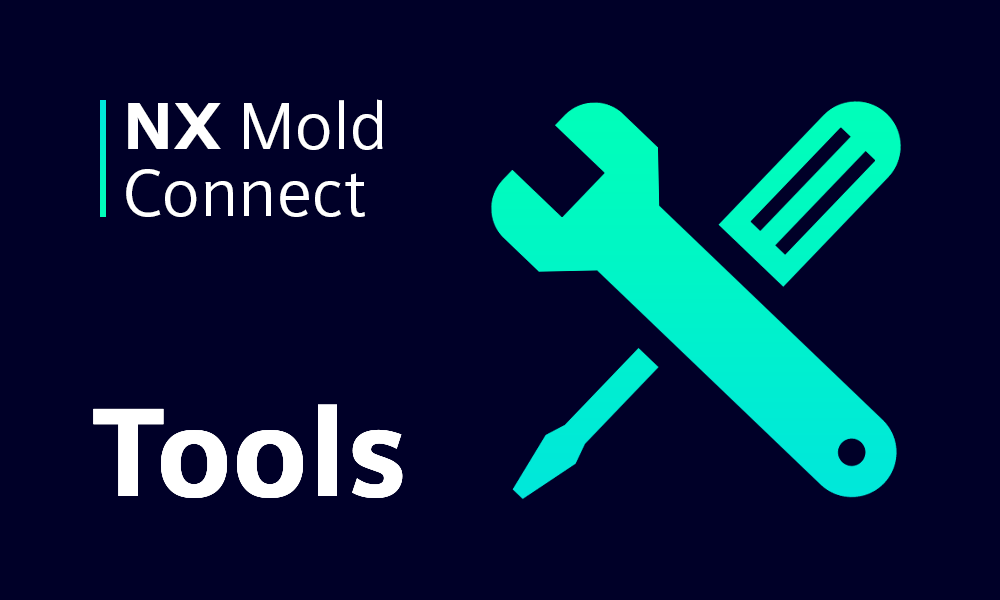Software in its many forms keeps advancing, whether it is used for gaming, smart devices, or designing and manufacturing. It can be frustrating or even overwhelming how quickly it changes, but most of us agree that its benefits outweigh the headaches of having to learn the updates to our software. This is especially true when it comes to software for manufacturing. Why is this? Because the better technology gets, the faster and easier it is to make the next best version of a product while reducing costs and time to market — who can object to that?
Injection-mold designers around the globe can use a range of software products to create a customers’ design and functionality requirements. Siemens currently offers three levels of its NX CAD software: Traditional and on-premises CAD; cloud-based traditional CAD; and now cloud-based CAD with NX apps. What benefits do each of these options offer and how do you know which is the best choice for your organization? This article will discuss each option to offer insights that will help you draw the most fitting conclusion.

Siemens’ NX Cloud Connected Mold Design software brings the designer, customer, mold maker, and any other interested parties together to make design work faster and more successful. Image source: Siemens.
Traditional CAD: Tried and True
There are thousands of CAD users that have relied on Siemens NX software through the years, particularly the traditional, on-premises version that most were trained on. As the world continues to become more digitally engaged, it behooves users to look beyond the comfort zone of the tried and true, traditional on-premises use of the product.
According to veteran NX user Kevin Jongsma, president of Intelligent Design and Services, Inc. (Naperville, IL), mold makers tend to be creatures of habit. “They do adopt new technologies, but they need to be educated about the tangible advantages of working in the cloud,” he says, explaining that on-premises software provides complete control of a project for the user.
The result? Projects are kept on internal servers, limiting the opportunity for IP theft to occur and allowing mold designers the peace of mind to work on projects without any external threat. But with that comes the need to invest not just in a perpetual software license but in high-end graphics cards and the computer systems that can run them, which does not come cheap. An average desktop can cost around $800, whereas a high performing workstation, with the latest GPU and CPU Processors can cost at least $2,500.
Jongsma adds that with traditional, on-premises CAD use, maintaining the huge data files locally is necessary and can be costly. Many companies have 25 to 30-plus years’ worth of design data stored in their software program, and regular backup of all that data is a necessary safeguard, which takes time and resources. “Having complete control over all design data is good, but a downside, especially during a pandemic , is having to synchronize the data for use at different work locations. Plus, it needs to be standardized so that everyone works on the same version of the software,” he says.
Head in the Clouds: Establishing A New, Digital Mindset
Mold makers may be creatures of habit, but present them with a challenge pertaining to a mold’s design and manufacture and they are relentless in their pursuit of a solution that satisfies their customer. Many times, it is the increasing complexity of modern day molds that motivate them to explore new tools and technologies that help their businesses continue to thrive.
To compete with low-cost competitors, mold makers sought ways to work more efficiently and cut costs without compromising quality. To attract, train, and retain the next generation of workers, they saw the need to update training curricula and restructure manufacturing processes to cater to the way in which young people learn. Key components in each of these advancements were, and still are, more advanced equipment and software.
Siemens understands this. Based on its ongoing Digitalization Initiative which began several years ago, Siemens introduced Xcelerator Cloud; a portfolio of Xcelerator-as-a-Service (XaaS) design apps to help manufacturing companies move from traditional CAD software and into the digital age of IoT.
Xcelerator by Siemens is the catalyst for digital transformation. It provides secure access in the Cloud to the latest software, services, and application development platforms. The result is that designers can work more efficiently and collaborate more effectively on projects with co-workers, customers, and suppliers to speed production and time to market. Geoff Koch, a Siemens Digital Industries Software representative, defines the term digitalization in a blog posted last October: “Digitalization includes the use of an ever more comprehensive digital twin that integrates the virtual and physical worlds; personal and adaptable applications for new ways of working; and access to open, modern ecosystems.” He notes that this is what forms the foundation of the Siemens’ Xcelerator strategy.
As part of the Xcelerator Cloud portfolio, Cloud Connected NX Mold Designer uses automated functions and associativity with part models to simplify core and cavity development In addition, experts can make design changes and control transmission of those changes throughout the development process, and validate all aspects of the mold design, including part manufacturability. Libraries of standard parts, component systems, and mold base options make configuring the mold structure more streamlined, further accelerating efficiency.
Siemens Cloud Connected Products offer more flexibility in their use and application. Rather than a large up-front investment in a perpetual license, users have the option to purchase an annual or monthly subscription via SaaS offerings. Flexible Cloud-connected licensing and automatic updates make it easy to manage NX use, reducing IT and maintenance expenses.
Premises and Cloud-based Price Comparison Chart
| Software Type * | Price |
| NX Mold Designer (on premise) | $972 a month |
| NX Cloud-Connected Mold Designer | $775 a month |
* For details of what each NX Cloud connected product includes, click here.
Blurring Boundaries Between the Physical and the Digital
Siemens understands that having that connection to the Cloud and the opportunity to subscribe to software and services on demand is the digital future. NX Mold Connect blurs the boundaries between the physical and digital worlds of manufacturing and opens new avenues to the latest design capabilities. Users can embrace faster, more advanced design solutions while maintaining control over critical data as if they were designing on premises.
Paul Brown, Senior Marketing Director for PES/NX at Siemens Digital Industries Software, underscores this, “We have taken everything the mold-making industry knows and loves about NX and elevated it to the Cloud to give designers and engineers unprecedented access to the latest software capabilities more quickly, more easily, and using the SaaS aspect, when and how they need it.”
Jongsma concurs with Brown, saying: “Mold designs are becoming increasingly more complex and there are many different factors that must be considered in the process, including the plastic materials and mold components being used, part characteristics and moldability, venting and cooling, to name a few. NX Mold Connect heightens the collaborative aspect of the estimating, design, and revision processes by enabling real-time interaction with the molder and OEM, which can save valuable time."
Jongsma extolls the benefits of NX Mold Connect from a financial perspective as well. “Having the option of paying for the licenses as we need them instead of paying thousands of dollars for maintaining licenses locally is key financially,” he says. “Add to that the ability to use less expensive computer hardware to work with mega-sized design files in the cloud is a huge cost advantage, plus new versions of NX are always available.”

Are you ready to try Siemens’ NX Cloud Connected Mold Design software? Start your next project using your 30-day free trial and see how cloud-connected software plus XaaS programs can help you work more seamlessly and quickly. Image source: Siemens.
Is it Time for Your Team to Move to the Cloud?
So, what’s stopping you? If it is the issue of security and ownership of data, review our article titled “When is the Best Time to Make the Switch to Cloud?” to learn more about how Siemens is working to protect user IP. If funding and convincing upper management that investing in NX Cloud Connect can bring tangible ROI for your company, tap into our next article in this series titled “Get Management Buy-in to Cloud Technology.”
The future of manufacturing rests on digitalization. No matter where your company resides in the digital landscape, rest assured that Siemens has your back and is there to support you in your journey to the Cloud.
Start your 30-day trial of NX Cloud Connected Mold Designer.
For More Information
Find out more about all the NX products and which package will work best for your workflow now and in the future, by reading the next article, "What Mold Design Technology Do I Need?" And, as you make decisions about changing your set up, read how to "Get Management Buy-in to Cloud Technology."
By Cynthia Kustush. Cynthia is the former senior editor of MoldMaking Technology Magazine. Currently she is a freelance author specializing in manufacturing, particularly for the metalworking and plastics industries. The daughter of a mold manufacturer, Cynthia “grew up in the trade,” and for many years has been actively involved in organizations such as the American Mold Builders Association (AMBA) and the Society of Plastics Engineers (SPE). She resides in Chicago’s western suburbs.
This article was written and developed by the editors of Cadalyst, the leading publication covering computer-aided design and related software and hardware technologies for the AEC, civil engineering, and manufacturing markets.
NX Mold Connect, NX Cloud, and NX software are property of Siemens and all other trademarks mentioned herein are property of their respective owners.
Cynthia Kustush
Cynthia is the former senior editor of MoldMaking Technology Magazine. Currently she is a freelance author specializing in manufacturing, particularly for the metalworking and plastics industries. The daughter of a mold manufacturer, Cynthia “grew up in the trade,” and for many years has been actively involved in organizations such as the American Mold Builders Association (AMBA) and the Society of Plastics Engineers (SPE). She resides in Chicago’s western suburbs.
View All Articles



Share This Post